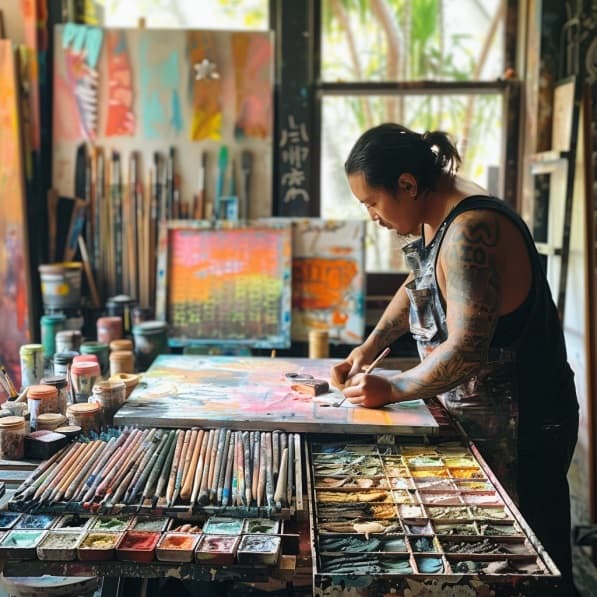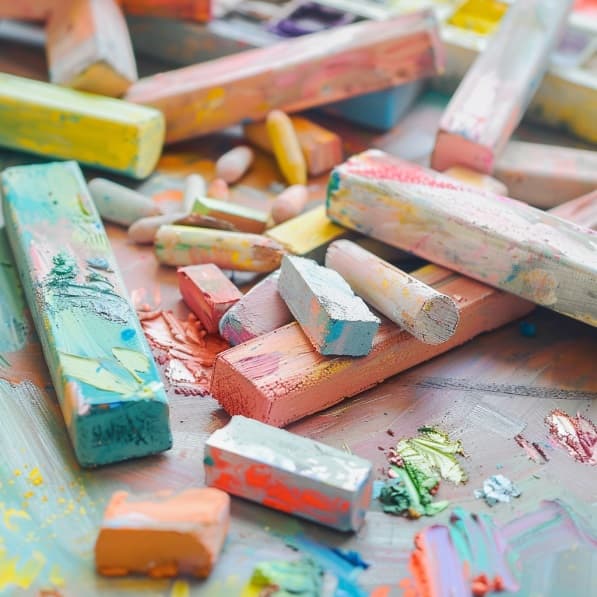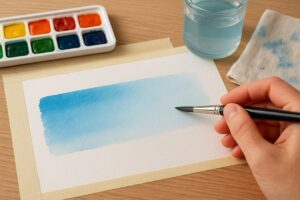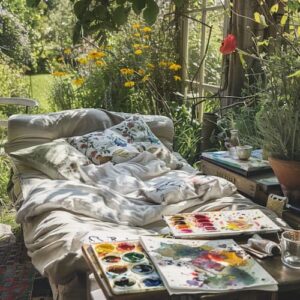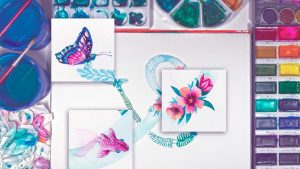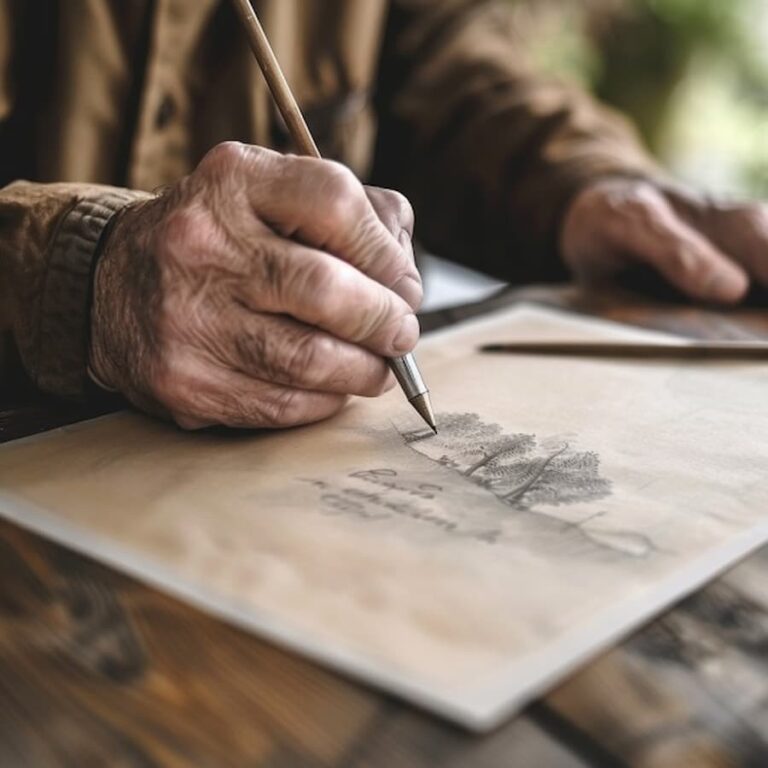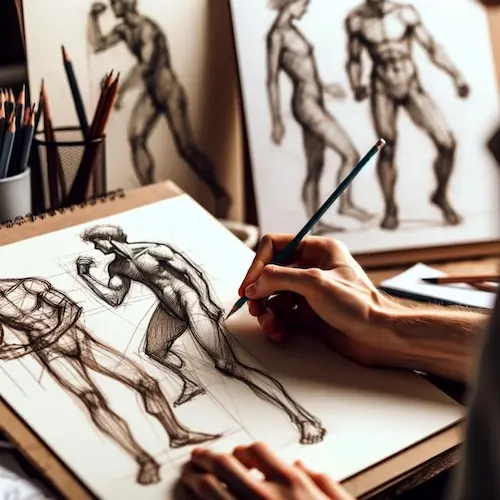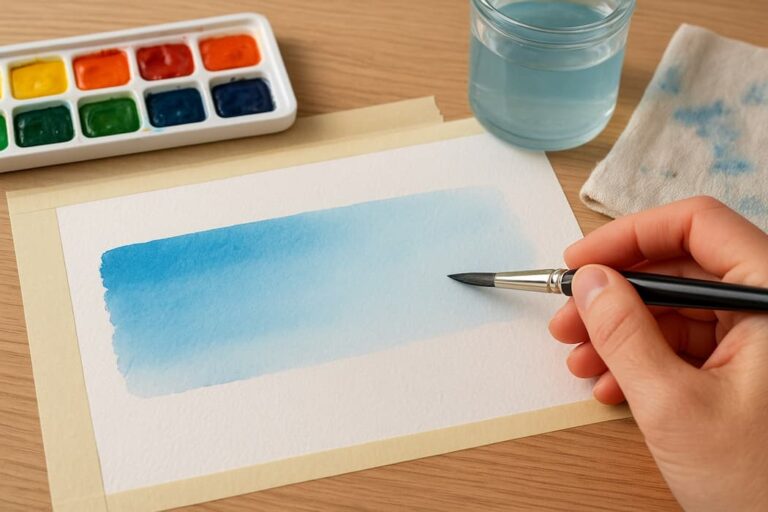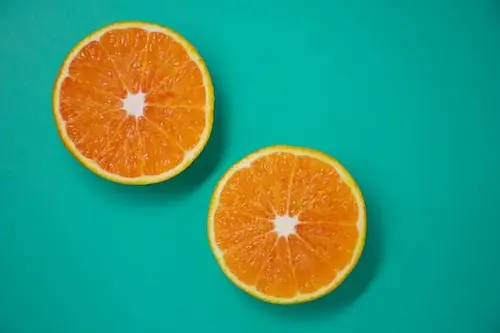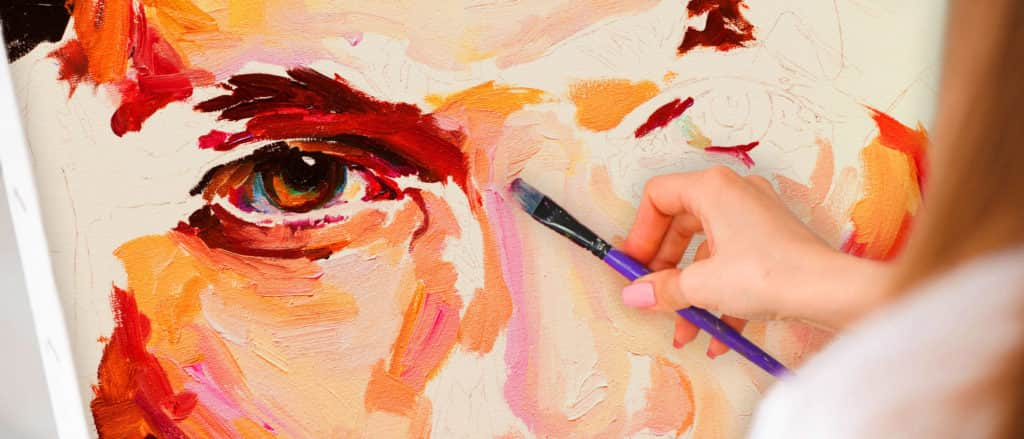Pastel painting is one of the most versatile and expressive artistic techniques.
In this article, we will explore the basics of pastel painting, from the choice of materials to the essential techniques for mastering this art.
Introduction to Pastel Painting
Pastels, known for their vibrant range of colors and textures, offer a unique experience for artists.
Unlike other mediums such as oil or watercolor, pastel combines the qualities of drawing and painting in a compact and accessible form.
But what makes pastel so special?
What are Pasteles?
Pastels are sticks of dry pigment that are mixed with a binder to hold their shape.
There are three main types of pastels:
- Dry Pastels: Include soft and hard pastels.
They are ideal for a wide range of techniques due to their ability to blend and blend easily. - Oil Pastels: Contain oils that give them a creamy texture.
They are perfect for thicker and layered effects. - Pastels in Bars: Combine characteristics of dry pastels and oil pastels, offering a balance between fluidity and texture.
Basic Principles of Pastel Painting
The first step in painting with pastels is to understand how the different types of pastels work and how they can be applied to various surfaces.
Materials Needed and Choice of Cakes
- Soft Pastels: They offer a wide variety of vibrant colors and are easy to blend.
However, their soft texture can be a challenge for beginners. - Hard Pastels: They are ideal for details and fine lines due to their firmer consistency.
- Oil Pastels: Provide a more robust finish and are excellent for layering and texturing.
Papers and Supports
The choice of paper is crucial to the success of a pastel painting.
Textured papers allow for better pigment adhesion.
Some of the most recommended include:
- Canson Mi-Teintes paper: Popular for its texture and variety of colors.
- Sand Paper: Offers a rougher texture, ideal for retaining several layers of cake.
- Pastelmat paper: Combines smoothness and texture, providing a unique surface to work on.
Other Materials
- Fixative: Used to fix the pastel and prevent stains.
- Diffusers or Tortillones: Tools for blurring and mixing colors.
- Gloves and Mask: To protect from cake dust.
Pastel Painting Techniques
Once you have your materials, it’s time to explore basic pastel painting techniques.
- Blurring Technique: Blurring is essential for creating smooth transitions and gradient effects.
You can blend with your fingers, a soft cloth, or a blender.
The key is to apply the pastel in light layers and blend to the desired softness. - Layering: The layering technique allows for depth and texture.
Start with lighter colors and work toward darker colors, applying each layer gently to avoid saturating the paper. - Texture Effects: To create texture, you can use techniques such as scratching or rubbing.
Scratching involves scraping off the top layer of pastel to reveal the color underneath.
Rubbing uses tools such as stiff brushes or spatulas to create patterns on the surface. - Color Blending: Color blending in pastels can be achieved in several ways.
One of the most common is to overlap layers of different colors and blend them.
You can also mix directly on the palette before applying to the paper.
Care and Conservation
Caring for your paints and materials is crucial to maintain their quality over time.
- Fixing the Work: Applying a fixative at the end of your work helps protect the pastel from smudging and wear.
Use spray fixatives in a well-ventilated area and with light coats to prevent colors from bleeding. - Storage: Store your paints in protective folders or frames with glass to avoid direct contact with the surface.
Upright storage is ideal to prevent pastel dust from accumulating. - Material Maintenance: Keep your cakes organized and clean.
You can use a box with compartments and a soft cloth to wipe off dust residue.
Tips and Tricks for Beginners
-Practice Light Hand
Light pressure when applying the pastel allows for smoother layers and better blending possibilities.
Avoid pressing too hard, as this can saturate the paper and make correction difficult.
-Experiment with Textures
Don’t limit yourself to using only your fingers to blend.
Try different tools such as brushes, sponges, and blenders to see how they affect the texture and appearance of the cake.
-Use Color Strategically
Choose complementary colors to create contrast and analogous colors for smooth transitions.
Experiment with color combinations to discover new palettes.
-Learn from the Masters
Look at works by well-known artists who use pastel for inspiration and to learn new techniques.
Looking at how they handle light, color, and texture can offer valuable insights.
-Keep your work area clean.
Cake dust can be harmful if inhaled in large quantities.
Be sure to work in a well-ventilated area and regularly clean your workspace.
Pastel painting offers an exciting opportunity to explore color and texture in a direct and tactile way.
With these basic principles, you’ll be well on your way to mastering this technique and creating vibrant, dynamic works of art.
To learn how to work with pastels like a real professional, knowing all its characteristics, use of materials and how to get the most out of this technique, visit our Painting Course with Lifetime Access + Workshops.
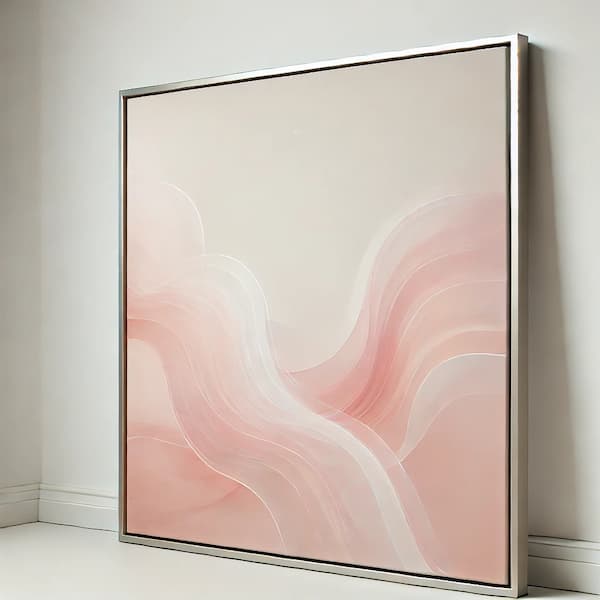
Cómo Elegir los Cuadros Color Rosa Pastel Adecuados para Cada Espacio
Elegir el cuadro color rosa pastel adecuado para un ambiente específico puede parecer una tarea sencilla, pero requiere prestar atención a ciertos detalles que harán que la obra de arte se integre de forma armoniosa con el resto de la decoración.
Tamaño y Proporción
Es esencial considerar el tamaño del cuadro en relación con la pared en la que va a ser colocado. Un cuadro demasiado pequeño puede perderse en una pared grande, mientras que uno demasiado grande puede abrumar el espacio. Los cuadros color rosa pastel pequeños funcionan bien en composiciones múltiples, creando una galería de arte personal.
Ubicación Ideal para los Cuadros Color Rosa Pastel
Salón
El salón es uno de los lugares más recomendables para exhibir un cuadro color rosa pastel. Aquí, puede actuar como un punto de atracción visual que contrasta con tonos neutros o combina con otros colores pastel.
Dormitorio
Para el dormitorio, los cuadros color rosa pastel son perfectos, ya que este es un espacio donde se busca la calma y la relajación. Colocar un cuadro sobre la cabecera de la cama puede aportar una atmósfera serena y equilibrada.
Oficinas y Espacios de Trabajo
El rosa pastel no solo es adecuado para áreas personales; también puede utilizarse en oficinas o estudios para fomentar un ambiente creativo y tranquilo. Un cuadro color rosa pastel puede contrarrestar el estrés típico de estos entornos, aportando un toque de paz visual.

Cómo Combinar los Cuadros Color Rosa Pastel con Otros Elementos Decorativos
El rosa pastel es increíblemente versátil, lo que significa que se puede combinar con una amplia gama de colores y texturas para lograr efectos decorativos variados.
Colores que Combinan con los Cuadros Color Rosa Pastel
Los tonos neutros como el gris, blanco y beige son ideales compañeros del rosa pastel. También es posible combinarlo con colores más vibrantes como el azul marino, creando contrastes interesantes que realzan la obra de arte.
Texturas y Materiales
El uso de texturas es otro elemento clave al combinar un cuadro color rosa pastel. Materiales como la madera clara, el mármol o textiles suaves complementan el tono delicado del rosa, agregando profundidad y calidez a la composición.
Cuidados y Mantenimiento de los Cuadros Color Rosa Pastel
Una vez que has elegido y colgado tu cuadro color rosa pastel, es importante mantenerlo en buenas condiciones. Aquí te damos algunas recomendaciones para asegurar que se mantenga impecable con el paso del tiempo.
Protección contra la Luz Solar
El rosa pastel es un color sensible a la decoloración, especialmente cuando está expuesto a la luz solar directa durante períodos prolongados. Se recomienda colocar los cuadros color rosa pastel en áreas con luz difusa o asegurarse de utilizar vidrios con protección UV.
Limpieza
La limpieza de un cuadro color rosa pastel debe hacerse con delicadeza. Utiliza un paño seco y suave para eliminar el polvo, evitando el uso de productos químicos agresivos que puedan dañar la pintura o el marco.
Para aprender a trabajar con pastel como un auténtico profesional, conociendo todas sus características, uso de materiales y cómo sacarle el máximo partido a esta técnica, visita nuestro Curso de Pintura con Acceso Vitalicio + Talleres.


